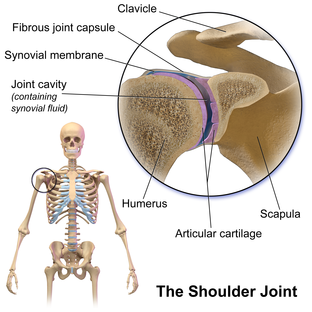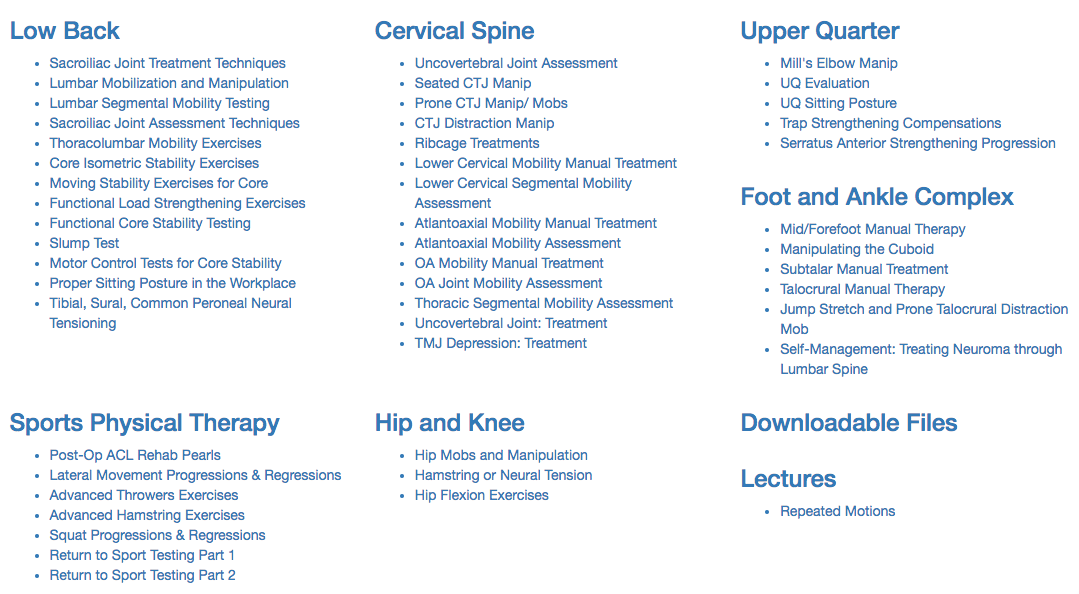- Home
- About Us
- TSPT Academy
- Online Courses
-
Resources
- Newsletter
- Business Minded Sports Physio Podcast
- Day in the Life of a Sports PT
- Residency Corner
-
Special Tests
>
-
Cervical Spine
>
- Alar Ligament Test
- Bakody's Sign
- Cervical Distraction Test
- Cervical Rotation Lateral Flexion Test
- Craniocervical Flexion Test (CCFT)
- Deep Neck Flexor Endurance Test
- Posterior-Anterior Segmental Mobility
- Segmental Mobility
- Sharp-Purser Test
- Spurling's Maneuver
- Transverse Ligament Test
- ULNT - Median
- ULNT - Radial
- ULNT - Ulnar
- Vertebral Artery Test
- Thoracic Spine >
-
Lumbar Spine/Sacroiliac Joint
>
- Active Sit-Up Test
- Alternate Gillet Test
- Crossed Straight Leg Raise Test
- Extensor Endurance Test
- FABER Test
- Fortin's Sign
- Gaenslen Test
- Gillet Test
- Gower's Sign
- Lumbar Quadrant Test
- POSH Test
- Posteroanterior Mobility
- Prone Knee Bend Test
- Prone Instability Test
- Resisted Abduction Test
- Sacral Clearing Test
- Seated Forward Flexion Test
- SIJ Compression/Distraction Test
- Slump Test
- Sphinx Test
- Spine Rotators & Multifidus Test
- Squish Test
- Standing Forward Flexion Test
- Straight Leg Raise Test
- Supine to Long Sit Test
-
Shoulder
>
- Active Compression Test
- Anterior Apprehension
- Biceps Load Test II
- Drop Arm Sign
- External Rotation Lag Sign
- Hawkins-Kennedy Impingement Sign
- Horizontal Adduction Test
- Internal Rotation Lag Sign
- Jobe Test
- Ludington's Test
- Neer Test
- Painful Arc Sign
- Pronated Load Test
- Resisted Supination External Rotation Test
- Speed's Test
- Posterior Apprehension
- Sulcus Sign
- Thoracic Outlet Tests >
- Yergason's Test
- Elbow >
- Wrist/Hand >
- Hip >
- Knee >
- Foot/Ankle >
-
Cervical Spine
>
- I want Financial Freedom
- I want Professional Growth
- I want Clinical Mastery
|
During one of my recent mentoring sessions for my fellowship, we saw a patient that had plateaued in progress. The patient was being seen for right upper extremity pain. The patient initially presented with pain that was associated primarily with cervical radiculopathy signs, such as bakody's sign, (+) cervical distraction test, (+) ULNT, etc. The patient initially responded great to PT as the radicular signs completely normalized. However, some right anterior shoulder pain remained that presented with signs of symptoms of shoulder dysfunction (anterior glide medial rotation syndrome, weak shoulder ER, restricted IR mobility, etc.). We gave him a few exercises to address these deficits. After a couple weeks, the pain in his shoulder had not changed and we had to decide the next course of action. The patient's initial reaction was to "give up and live with the pain." We initially talked about the possible benefit of an injection to address the pain, however, that was when our discussion switched to plan of care directly regarding PT. Upon examination, the patient still had restricted inferior GH capsular mobility, shoulder ER strength and scapular strength deficits. While the pain had not improved, the impairments had, but still had dysfunction remaining. When I first came out of school, I may have referred this patient back due to lack of progress, but with the deficits remaining, I would recommend continuing PT. His pain at this point still has impairments associated with it that can be addressed by PT, so we modified his HEP to focus on these strength and mobility deficits. Don't be so quick to give up on a patient's rehab. It is easy to become concerned when the patient isn't responding as we had hoped, but that is why it is essential to regularly evaluate the patient's progress in strength, mobility, flexibility, etc, instead of simply referring the patient back. It helps us track progress and helps the patient understand how they are responding as well. A change in the treatment plan or perspective may be necessary, or continue along the path the patient is currently on if progress is being shown. -Dr. Chris Fox, PT, DPT, OCS
1 Comment
7/18/2023 01:39:30 pm
The EngageSpace event by AFWERX presents an unparalleled chance to interact with exceptional minds and witness the upcoming developments in the frontier of space. Over 800 teams participated in four AFWERX Challenges that were focused on space, and now, more than 175 of them have been chosen to showcase their solutions and connect with numerous Space experts, potential government buyers, and enthusiasts worldwide. With the US Air Force or Space Force providing funding opportunities for prototyping and development, some of these companies have the potential to move ahead.
Reply
Leave a Reply. |
Dr. Brian Schwabe's NEW Book in partner with PaleoHacks!
Learn residency-level content on our
Insider Access pages We value quality PT education & CEU's. Click the MedBridge logo below for TSPT savings!Archives
July 2019
Categories
All
|









 RSS Feed
RSS Feed